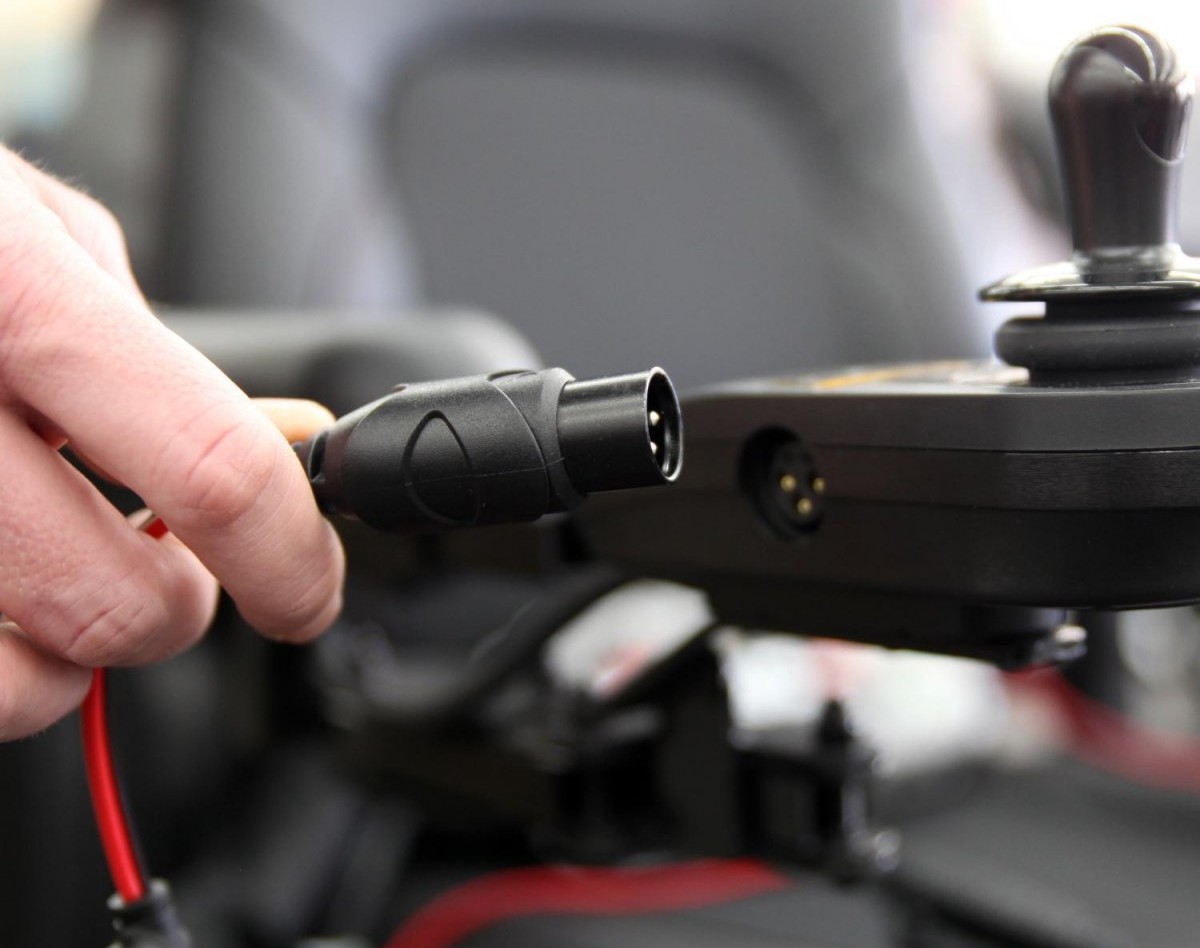Power wheelchair batteries are often not thought of until they experience problems. At GTK, we’d like to shed some light on wheelchair batteries considering how important they are to the wheelchair.
A power wheelchair uses two batteries that are connected in series, and supply the electrical energy needed to power the wheelchair. We often use car analogies when thinking about wheelchairs, but the wheelchair battery isn’t like the car battery, it’s more like the petrol tank. Both the wheelchair battery and petrol tank supply the energy needed to operate the motors. If you run out of petrol in a car or battery in a power wheelchair, neither will be able to operate.
Power wheelchair batteries come in different sizes. Smaller power wheelchairs often have smaller batteries designed for less intensive use. Larger power wheelchairs will have up to 72 Ah (amp hour) batteries which are larger and heavier, and provide more power. The amp hour (Ah) refers to the amount of energy charge in a battery than will allow on amp of current to flow for one hour, but a simple way to think about it is a battery with a larger amp hour rating is bigger and more powerful. These types of batteries are a good choice for power wheelchairs that will be used in outdoor environments or those that have power seat functions like power tilt.
How long will the batteries last?
One of the most common questions asked about batteries is how long the battery charge will last. This is a difficult question to answer as it depends on many factors. These factors include the type of terrain or environment the wheelchair is being used in, the temperature, the type of motors in the wheelchair, the weight of the power wheelchair and the user, how the wheelchair has been programmed, and what other devices are on the wheelchair drawing power (such as auxillary chargers and ventilators, for example). Most wheelchair manufacturers supply a guide of the typically expected range of their batteries and your GTK consultant will be able to advise you of this information.
It’s important to recognise that batteries will often require replacement during the expected lifespan of the wheelchair. Generally, batteries will last approximately 12-18 months for a heavy user. Someone who doesn’t drive large distances each day may be able to get 2-3 years or longer from their batteries.
How do I care for my batteries?
It’s important to properly care for your batteries to keep them running well for as long as possible. Many manufacturers recommend that you ‘run them in’ during their initial care period when your first receive the wheelchair.
To do this, make sure your battery is fully charged before the wheelchair’s first use. Charge the wheelchair overnight after each use and make sure that the battery charger indicates that the battery is fully charged before use the next day. This should be done at least twenty times to complete the ‘run in’ procedure. Newer batteries will take longer to fully charge but this will improve as you go.
Make sure to charge your wheelchair daily with the charger supplied with the power wheelchair. Keep your tyres inflated to their recommended pressure as this improves battery range. As power wheelchairs use a gel cell battery, there is no need to check the fluid levels like in an automotive battery.
Can my power wheelchair be transported on a plane?
The gel cell batteries that are used in power wheelchairs are safe to be transported on a plane, however as all airlines have different requirements you need to check directly with the airline what they require. Sometimes the airlines might ask you to disconnect the batteries, and the method for doing this can be different on each chair. Your GTK service technician or consultant can advise on how this can be done on individual wheelchairs.
If you have any further questions about wheelchair batteries, please contact us here at GTK and we’ll be happy to help.



